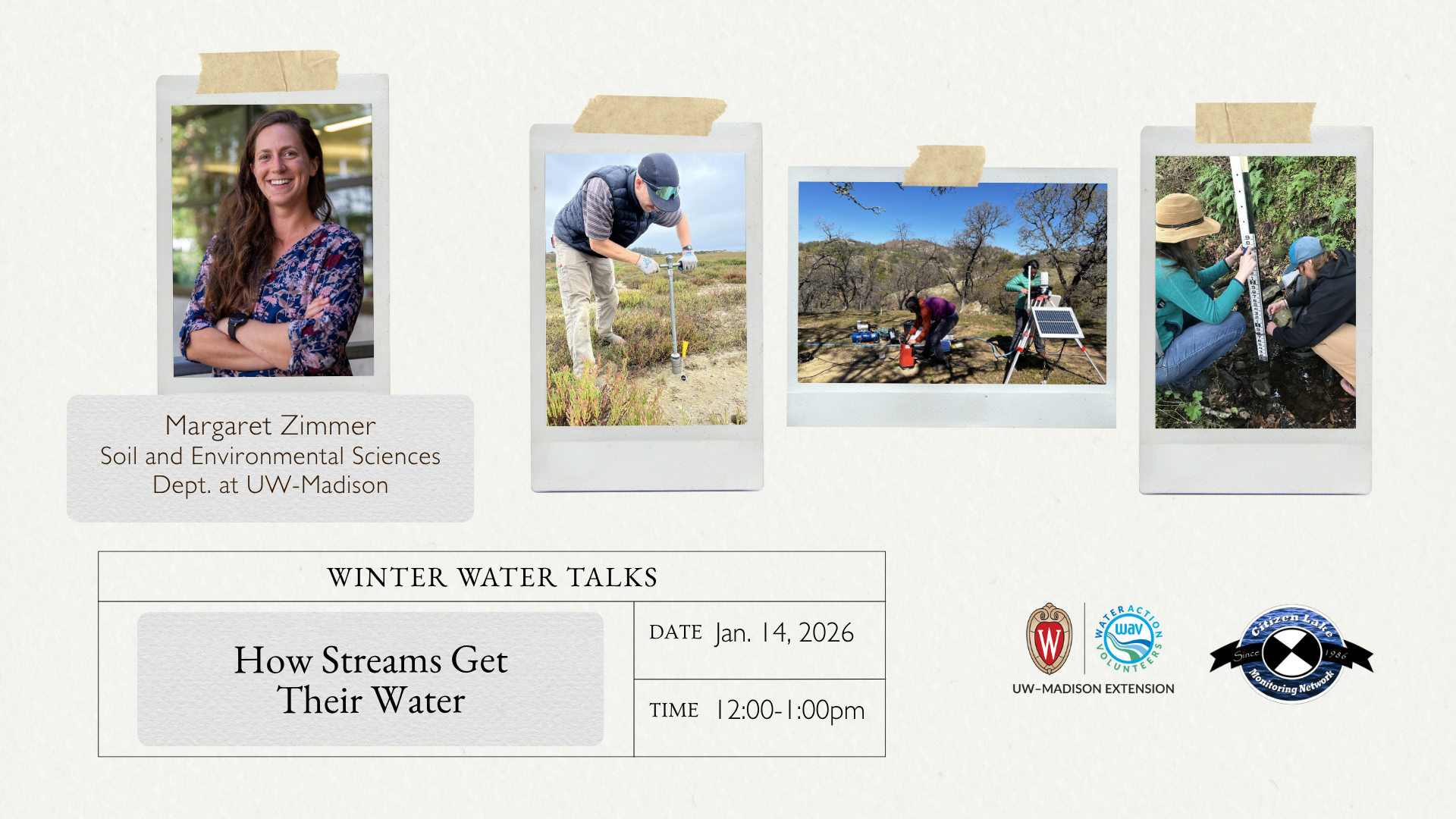How Streams Get Their Water
- Home
- » How Streams Get Their Water
January 14th, 2026, 12:00 PM to 1:00 PM
Join us this winter for our annual Winter Water Talks webinar series! Webinars are co-hosted by the Water Action Volunteers Program and the Citizen Lake Monitoring Network Program.
WEBINAR DESCRIPTION
Streams are some of the most hydrologically dynamic aquatic systems on Earth’s surface. The origin of stream water sets its chemical and biophysical fingerprint, yet quantifying where water comes from in streams is challenging. This is in large part because hydrologic flowpaths are dynamic in space and time, activating during certain periods of the year in response to rainfall and snowmelt and deactivating as the terrestrial environment dries. As our weather and human water use intensify, we anticipate large scale changes to the hydrologic behavior of our river and stream networks, with anticipated ripple effects to our in-stream biological communities. This talk provides a foundational survey about how streams get their water, with case studies from across Wisconsin.
SPEAKER
Margaret Zimmer received her BS in Environmental Studies at Oberlin College, MS in Earth Sciences at Syracuse University, and her PhD in Earth and Ocean Sciences at Duke University. She was faculty in the Department of Earth and Planetary Sciences at the University of California, Santa Cruz from 2018 to 2023. She then moved to Madison and served as Supervisory Hydrologist for the US Geological Survey Upper Midwest Water Science Center from 2023 to 2024. In August 2024, she joined the Soil and Environmental Sciences Department at the University of Wisconsin-Madison as an Associate Professor. Her research group studies how water moves across Earth’s near-surface environments, as well as the associated chemical and biological implications of water movement and storage. For example, her group has studied controls on denitrification in coastal wetlands, wildfire impacts on in-stream nutrient and material mobilization, and the behavior of non-perennial streams.
